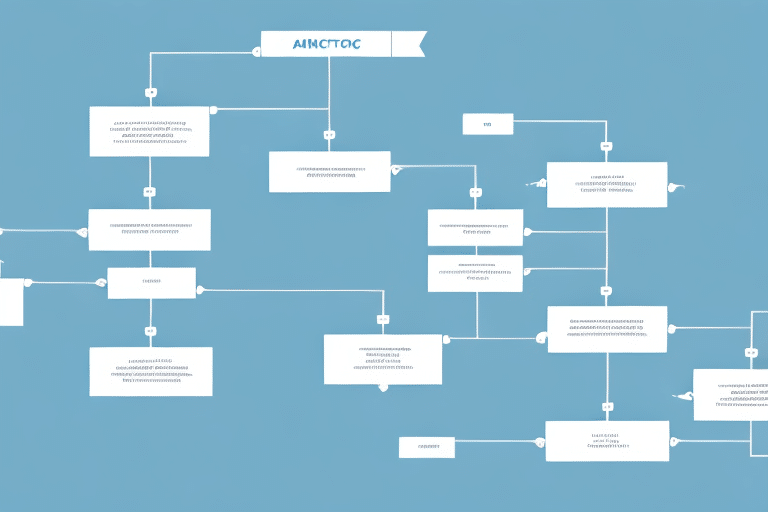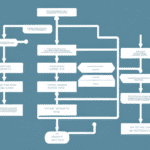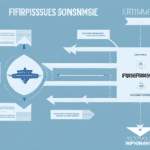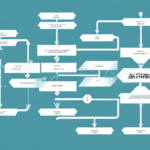Creating a Basic Shipping Platform Process Flowchart
Shipping is the backbone of most businesses, and any delays or issues in the shipping process can have severe consequences for a company's operations. Therefore, it's essential to have a clear understanding of the shipping process through a detailed process flowchart. In this article, we'll discuss why a shipping platform process flowchart is vital for your business and guide you through the step-by-step process of creating one.
Why a Shipping Platform Process Flowchart is Important for Your Business
A shipping platform process flowchart is a graphical representation of the steps involved in the shipping process. It helps your team understand the flow of operations and identify areas for improvement. According to a Logistics Management report, companies that utilize process mapping in their logistics operations see a 15% increase in efficiency.
Enhancing Efficiency and Reducing Errors
With a shipping platform process flowchart, you create a blueprint of your typical shipping process, which serves as a reference point for your entire team. This ensures consistency and uniformity, reducing the likelihood of errors and delays.
Identifying Bottlenecks
One of the key benefits of a shipping platform process flowchart is the ability to identify bottlenecks. By analyzing the flowchart, you can pinpoint areas where the process slows down or where there are unnecessary steps, enabling you to streamline operations and reduce costs.
Facilitating Training
An effective flowchart serves as a training tool for new employees. Providing a visual representation of the shipping process helps them understand their roles and how they fit into the bigger picture, accelerating their onboarding process.
Understanding the Basics of a Shipping Platform Process Flowchart
A shipping platform process flowchart typically consists of a series of boxes representing each step in the shipping process, connected by arrows indicating the flow. The standard workflow starts with picking products from the warehouse, followed by packing, labeling, and ends with delivery to the customer.
Customization Based on Business Needs
The flowchart can vary depending on the specific needs of your business. For instance, if your business offers international shipping, additional steps like customs clearance may be included. Similarly, expedited shipping options may require separate processes. Customizing the flowchart ensures that it accurately reflects your unique shipping requirements.
Creating a Shipping Platform Process Flowchart
Building a shipping platform process flowchart can seem complex, but following a structured approach can simplify the process. Below is a step-by-step guide to help you create an effective flowchart.
Step-by-Step Guide
- Understand the Current Shipping Process: Gather comprehensive information from all involved departments to create an accurate flowchart and identify areas for improvement.
- Determine the Steps Involved: Identify the different steps in the shipping process, such as picking, packing, labeling, and shipping.
- Create a Flowchart Template: Utilize software tools like Lucidchart, Visio, or Creately to design your template.
- Add Steps to the Flowchart: Populate the template with the identified steps, ensuring simplicity to maintain clarity.
- Connect the Steps: Use arrows to indicate the flow between steps and review the flowchart for completeness and accuracy.
Tools You Need
Effective creation of a shipping platform process flowchart requires the right tools. Software like Lucidchart, Visio, and Creately offer user-friendly interfaces and pre-designed templates that facilitate the creation of detailed flowcharts. Additionally, these tools support team collaboration, allowing multiple stakeholders to contribute simultaneously.
Tips for Mapping Out Your Flowchart
- Keep It Simple: Avoid overcomplicating the flowchart with too many steps. A clear and concise flowchart is easier to understand and follow.
- Include Annotations: Use legends or annotations to explain symbols and arrows used in the flowchart.
- Create Multiple Versions: Developing different versions allows for comparison and refinement, ensuring the most effective flowchart structure.
- Gather Input from Teams: Engaging various teams involved in the shipping process helps identify gaps and correct misunderstandings.
Common Mistakes to Avoid When Creating a Shipping Platform Process Flowchart
Creating a shipping platform process flowchart requires careful attention to detail. Avoiding common pitfalls can enhance the effectiveness of your flowchart.
- Skipping Steps: Ensure that all steps in the shipping process are included to prevent errors and delays.
- Overcomplicating the Flowchart: Maintain simplicity to ensure the flowchart is easy to understand.
- Neglecting to Test and Review: Regularly test and review the flowchart to ensure its accuracy and relevance.
Analyzing and Improving Your Shipping Platform Process Flowchart
Analyzing and continuously improving your shipping platform process flowchart is essential for maintaining efficiency. Here are some best practices:
- Set Key Performance Indicators (KPIs): Establish KPIs such as shipping time, order processing time, and customer satisfaction to evaluate the flowchart's effectiveness.
- Identify Gaps: Regularly review the flowchart to spot gaps and areas that require enhancement.
- Engage Team Members: Involve team members in the analysis process to gather valuable feedback and insights.
Integrating Your Shipping Platform Process Flowchart with Other Business Processes
For optimal efficiency, integrate your shipping platform process flowchart with other business processes such as order processing, inventory management, customer service, and accounting. This integration enables seamless operations and provides deeper insights into your business workflows.
Best Practices for Managing Your Shipping Platform with a Process Flowchart
Effectively managing your shipping platform involves adhering to best practices that ensure consistency and continuous improvement.
- Train Your Team: Ensure that all team members are trained on how to use and interpret the shipping platform process flowchart.
- Continuously Improve: Regularly update the flowchart based on customer feedback, new products, and improved operational methods.
- Ensure Accessibility: Make the flowchart easily accessible to all team members to facilitate reference and adherence.
Measuring Success
To measure the success of your shipping platform process flowchart, monitor key metrics such as processing time, shipping time, inventory accuracy, and customer satisfaction. Regularly reviewing these metrics helps in making informed adjustments to the flowchart.
Future-proofing Your Shipping Platform with an Efficient Process Flowchart
The shipping industry is continuously evolving with new technologies and trends. An efficient process flowchart helps you stay ahead of the competition by ensuring your shipping operations are adaptable and resilient. Regularly update your flowchart to incorporate new technologies and respond to industry changes.
Examples of Successful Companies Utilizing Shipping Platform Process Flowcharts
Many successful companies have leveraged shipping platform process flowcharts to streamline their operations. Companies like Amazon, Alibaba, and UPS have adopted efficient shipping process flowcharts, resulting in enhanced efficiency and high customer satisfaction.
Conclusion: The Importance of Having a Well-Defined Shipping Platform Process Flowchart
An effective shipping platform process flowchart is crucial for ensuring smooth business operations. It provides clarity and transparency for the entire team, reduces errors, streamlines processes, and ultimately leads to increased customer satisfaction. By following the guidelines outlined in this article, you can create an efficient shipping platform process flowchart that will drive your business's success.






















